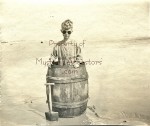Eugene B Ely
Cruiser USS Pennsylvania January 18, 1911
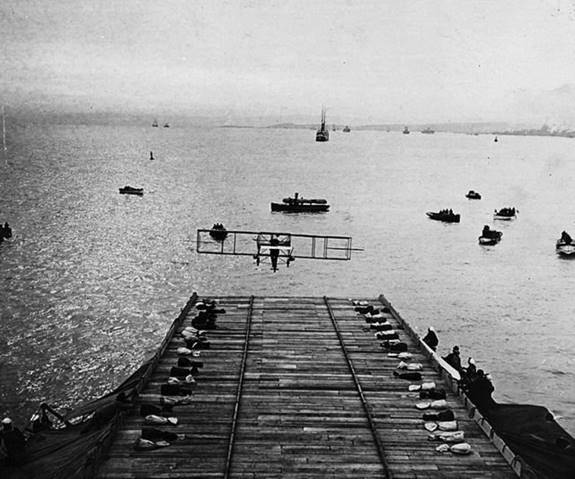
The first successful landing on a ship

San Francisco Bay, January 18, 1911: Pilot, Eugene B. Ely 25 years of age, completed the world’s first successful landing on a ship. The cruiser USS Pennsylvania had a temporary 133 food wooden landing strip built just above her afterdeck and gun turret as part of the experiment.
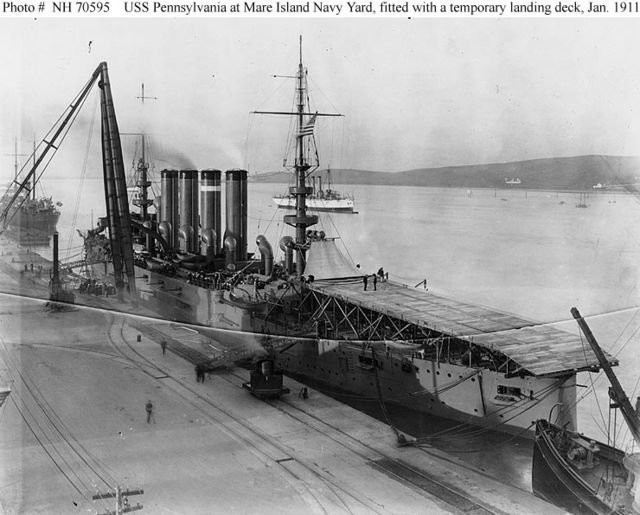
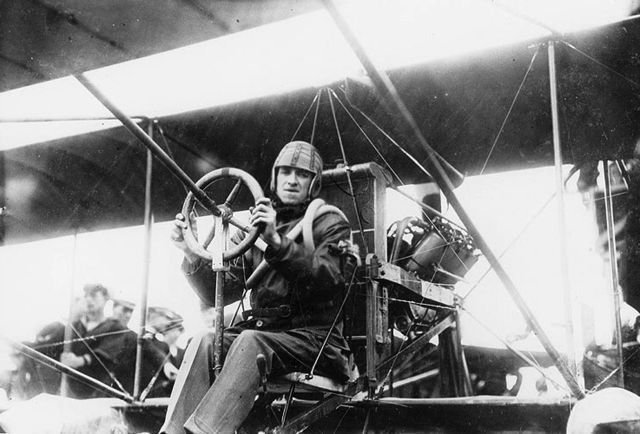
Ely’s Curtis Pusher had been fitted with a clever new invention called a tail hook. The idea was to quickly halt the aircraft after landing by using the tail hook to catch one or two of 22 rope lines. They were propped up a foot above the deck and weighted by the 50 pound sandbags tied to each end and strung three feet apart along the Pennsylvania’s temporary flight deck.
Mark J. Denger of the California Center for Military History has now written a biography of Eugene Ely which narrates thei historic day. On the morning of January 18, 1911, Eugene Ely, in a curtiss pusher biplane specially equipped with arresting hooks on it’s axle, took off from Selfridge Field Tanforan Race track in San Bruno, California and headed for San Francisco Bay.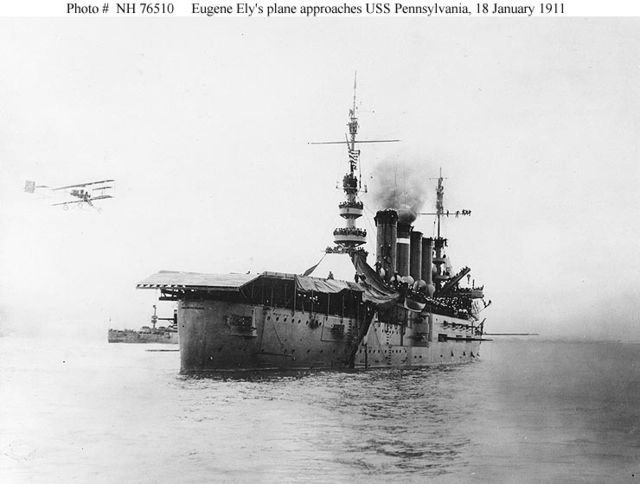
Ely’s plane was first sighted one half mile from the Pennsylvania’s bridge at an altitude of about 1,500 feet and crusing at a speed of approximately 60 mph. He circled several vessels of the Pacific Fleet at anchor in the bay. The airplane dipped to 400 feet as it passed directly over the Maryland and stilldropping, flew over the West Virginia’s bow at a height of only 100 feet. With a cross wind of almost 15 knots, he flew past rhe cruiser and then banked some 500 yards from the Pennsylvania’s starboard quarter toset up his landing approach. He now headed straight for the ship, cutting his engine when he was only 75 feet from the fantail and then allowed the wind to glide the aircraft onto the land deck. Ely landed on the centerline of the Pennsylvania’s deck, at a speed of 40 mph at 11:01 a.m.
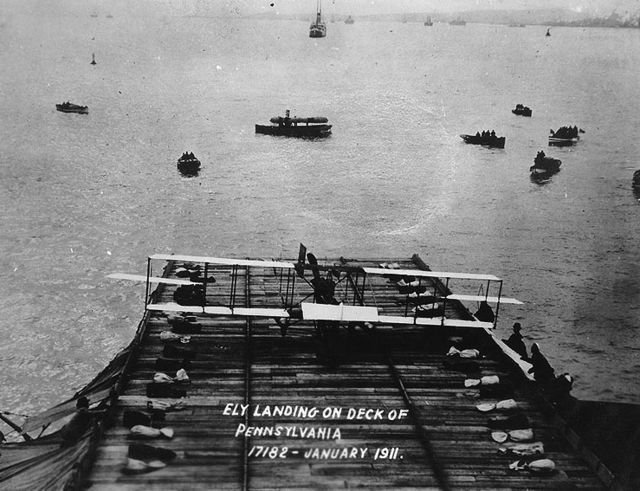
The forward momentum of his plane was quickly retarded by all the ropes stretched between the large movable bags of sand that had just been placed along the entire length of the runway. And as the plane landed, the hooks on the undercarrieag caught the ropes exactly as planned, which brought the plane to a complete stop.
Once on board the Pennsylvania, sheer pandemonium broke loose as Ely was greeted with a bombardment of cheers, boat horns and whistles, both aboard the Pennsylvania and from surrounding vessels.
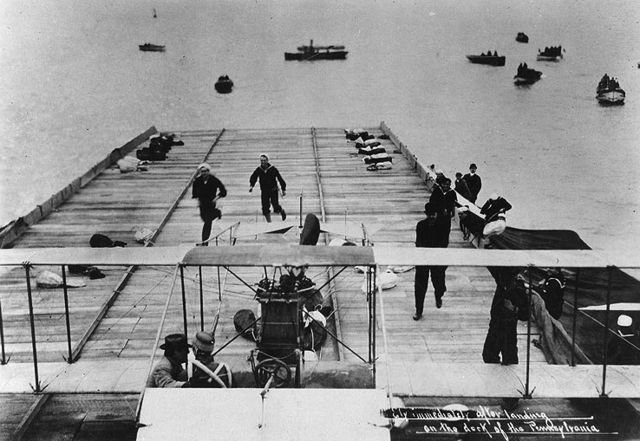
Ely was immediately greeted by his wife, Mabel, with enthusiastic, “I knew you could do it,” and then by Caaptain Pond, Commanding Officer of the Pennsylvania. Everything had gone exactly as planned. Pond called it, “the most important landing of a bird since the dove flew back to Noah’s ark.” Pond would later report, “Nothing damaged and not a bold or brace startled, and Ely the coolest man on board.”

After completing several interviews, Ely was then escorted to the Captain’s cabin where he and his wife were the honored guests at an officer’s lunch. While they dined, the landing platform was cleared and the plane turned around in preparation for his takeoff. Then Ely’s Pond and the others posed for photographs. 57 minutes later, Ely made perfect take-off from the platform, returning to Selfridge Field at the Tanforan racetrack where another tremendous ovation awaited him.
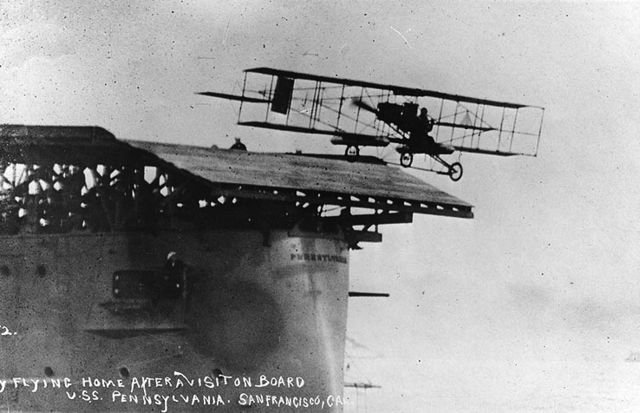
Both the landing and take off were also witnessed by several of the distinguished members of both U.S. Army and Navy, as well as state military officials. Ely had successfully demonstrated the possibility of the aircraft carrier.
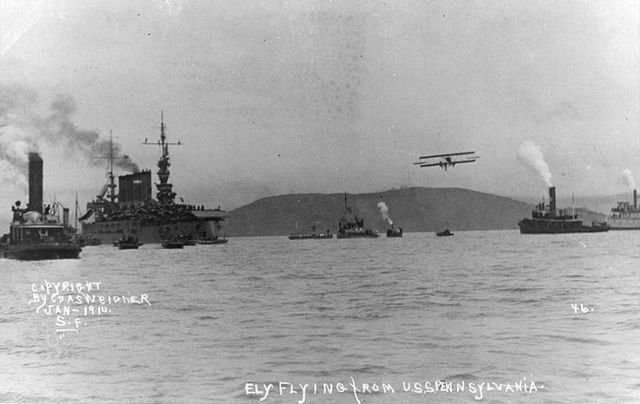
The US Navy’s first aircraft carrier, the USS Langley was commissioned in 1922, eleven years later. But Ely didn’t live to witness the milestone. He died just a few months after his historic flight on October 11, 1911, when he was thrown from his aircraft during a crash at an air show.

105, years ago, Ely merged the power of naval warships andaviation in ways that remain cutting edge today.
Contributed by Ben

